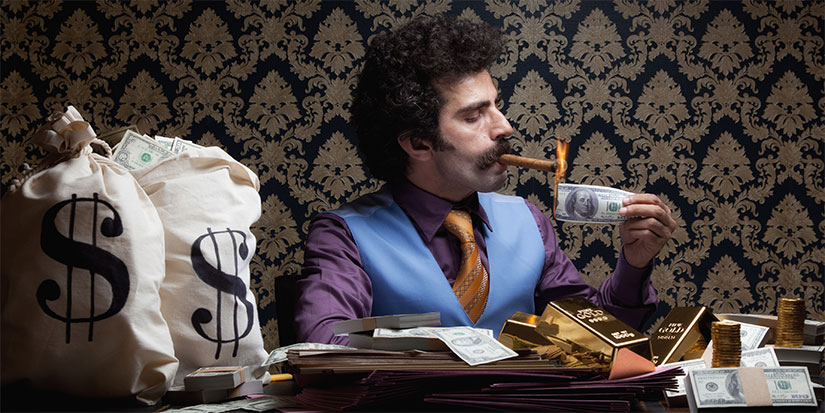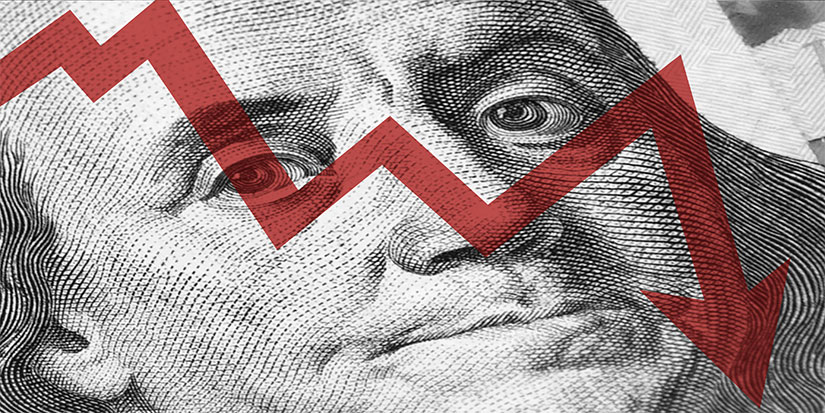
Financial Nihilism
Attaining wealth is harder these days, but in some ways, it is easier. I would not worry too much about it. Think about the future, or the future will think about you.

Windfalls
I have a rule about windfalls. Money is a tool, and it can be used for good or for ill. Don’t be a knucklehead—the money won’t last forever.

Gold and Personal Finance
You own gold to smooth out the ups and downs in your portfolio. This works because gold has a low or negative correlation to stocks, bonds, and other stuff.

A Matter of Perspective
Things are pretty good right now. But I think most experienced market practitioners know that pain could be just around the corner.

How Much Pain Can You Take?
The market is not going to go straight up and to the right. You will experience drawdowns. Prepare accordingly.

It Might Be a Bad Year
2024 might be a bad year. We might get a recession. We might get a bear market. We might get a housing collapse. We might get a war. We might get political turmoil. Actually, that is definitely going to happen.
The Stoics have a lot to say about this. Bad things might happen all around us, but we don’t need to internalize it. We can still be happy in a bad year.
One way to be happy in a bear market is to be short stocks! Or, at least, not invested in stocks or underinvested in them. Those are all options that are available to you. If you are not invested in stocks, then you can’t have a bad year… but you can’t have a good year either.
We can figure out the probability of having a bad or good year, using valuations. Stocks are currently expensive, so it is more likely that we will have a bad year—but certainly not guaranteed. Expensive stocks can get more expensive, although valuations have historically been a pretty good predictor of what kind of year you are going to have.
Right now, things seem pretty good. Gas prices have come down a lot. Unemployment is low. The housing market is declining (and is slow), but prices are still elevated. There is a wealth effect from the housing market and the stock market, and yet people are mostly dissatisfied because when you go to the grocery store, it costs $300.
There is not much that can be done about that. You can slow the rate of inflation, and you can’t really cause prices to fall. I mean, you could, but you wouldn’t be happy with the result.
Yes, food prices in the US are what I would characterize as very high. We should hope that doesn’t get worse.
Optimism and Pessimism
Most of the time, people are pessimistic. Occasionally, there are periods when people allow themselves to be optimistic. You can count them on one hand: the late 1920s and the late 1990s. The rest of the time, we’ve been miserable.
But the 1920s and the 1990s saw great technological progress. In the 1920s, there were dishwashers and washing machines—fantastic time-saving inventions. In the 1990s, there was the internet. You might argue that we are in another period of amazing technological innovation with AI, except there is widespread disagreement on whether AI is a force for good or evil. As a college professor, I am not much of an AI fan. I can no longer assign papers in my classes, and I do not consider this to be a positive development. Writing skills are important. They certainly have been important for me. There are externalities and unintended consequences to every innovation, but they are clearly visible with AI. It will take a while to sort this out.
Some people have pointed out that tech companies have represented nearly all the gains in the stock market, and that’s because tech companies have delivered all the innovation.
That isn’t entirely true. Ask a farmer about innovation—we now produce more food than ever on a fraction of the arable land. Ask a doctor about innovation—we now can cure cancer with immunotherapy drugs. Ask the entertainment industry about innovation—we now have every TV show and movie in existence at our fingertips.
There is innovation all over the place; we’re just obsessed with the tech industry. And honestly, outside of AI, the tech industry is running out of ideas.
Slow and Boring
We are hyper-focused on investing in things that grow rapidly, but there are a lot of other slow, boring things to invest in.
Berkshire Hathaway (BRK.A) is all about slow and boring, and it seems to work for the company. Yes, it has a ginormous position in Apple (AAPL), but Apple is slow and boring at this point, and there is not a lot of innovation going on there.
I think this is the year that slow and boring will work, although I think that every year. The Magnificent 7 stocks were up over 100% collectively last year. I would be surprised if there was a repeat of that result.
As far as AI goes, there currently aren’t any publicly traded vehicles. Maybe someday OpenAI will go public, or something else. Maybe there won’t be a pure play on it at all. Maybe we’ll just have to invest in Alphabet (GOOGL) or Microsoft (MSFT). Maybe the Big Tech giants will get even bigger.
Last year was pretty good for stocks, and it might not be as good this year. Above all, it is important to be diversified across asset classes. Have some bonds. Have some commodities. Have some real estate. Have some cash.
And above all, have a good time no matter what is going on.

Jared Dillian, MFA
|